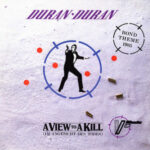“Adam’s Song” marks a significant turning point in Blink-182’s discography, often recognized as the moment the band embraced more serious themes in their music. Nestled within their hit album Enema of the State, between the high-energy tracks “Dysentery Gary” and “All the Small Things”, this slower-paced song delves into weighty subject matter, setting it apart from their earlier, more lighthearted fare.
Exploring the Depths of “Adam’s Song” Lyrics: Depression and Suicide
Departing from the band’s signature toilet humor, “Adam’s Song” lyrics confront themes of depression and suicide with raw honesty. Written in C major, with guitars tuned a whole step down, the song’s somber tone is immediately apparent. This thematic shift was a notable evolution for Blink-182, resonating with listeners who connected with the vulnerability expressed in the lyrics. Musically, the arrangement also represents a departure from their previous work. The verses feature muted guitar chords and a conventional bassline, while the chorus introduces octave guitar lines and a shift in the bass to chord progressions. This dynamic musical structure mirrors the emotional weight of the lyrics, creating a powerful and evocative listening experience. Fans of Blink-182 may notice similarities to their later song “Stay Together for the Kids,” from the album Take Off Your Pants and Jacket, which also tackles serious themes of family issues and broken homes.
“Take Your Time, Hurry Up”: A Nirvana Nod in “Adam’s Song”
The introspective nature of “Adam’s Song” lyrics is further enriched by a subtle nod to another iconic band known for their exploration of complex emotions: Nirvana. The lyrics “I took my time, I hurried up, The choice was mine, I didn’t think enough” directly reference Nirvana’s hit “Come as You Are,” which includes the line “Take your time, hurry up, the choice is yours, don’t be late.” This lyrical echo serves as a poignant intertextual moment, connecting “Adam’s Song” to a broader conversation about choice, time, and internal conflict within the landscape of alternative music.
The Melancholic Visuals: Blink-182’s Past in the “Adam’s Song” Music Video
Complementing the somber tone of “Adam’s Song” lyrics is its music video, a melancholic montage of Blink-182’s journey. The video interweaves childhood photos of the band members with footage of them performing in a spacious warehouse. This visual narrative adds another layer of depth to the song, offering a glimpse into the band’s history and personal lives, enhancing the emotional resonance of the track. Interestingly, this serious music video was later self-parodied in the band’s video for “Man Overboard,” showcasing their ability to balance introspection with their characteristic humor.
Unraveling the Inspiration Behind “Adam’s Song”: Beyond Misconceptions
Despite fan theories and speculation, the true inspiration behind “Adam’s Song” is less about a specific individual and more about broader themes. For a time, the website AdamsLetter.com was mistakenly believed to hold the key to the song’s meaning. However, this was debunked as a fictional narrative, with any resemblance to real events being purely coincidental. Adding a touch of dark humor, Tom DeLonge jokingly suggested on German TV that the Adam in question was a “cowboy war hero.” The actual title is an homage to a sketch from “Mr. Show with Bob and David,” featuring a boy contemplating suicide while listening to his favorite band. This reveals a more nuanced and perhaps satirical origin for the song’s title, contrasting with the heavy themes explored in the lyrics.
Controversy and Impact: “Adam’s Song” and its Real-World Resonance
“Adam’s Song” entered the public consciousness in a controversial way in 2000 when it was tragically linked to the suicide of 17-year-old Greg Barnes, a survivor of the Columbine High School massacre. Reports indicated the song was playing on repeat at the time of his death. This event sparked debate about the song’s message, with writer Mark Hoppus firmly stating that “Adam’s Song” is intended to be anti-suicide, emphasizing themes of overcoming despair and finding hope.
A Song “Retired”: “Adam’s Song” in Blink-182’s Live Performances
The legacy of “Adam’s Song” took another poignant turn following the passing of DJ AM (Adam Goldstein) in 2009. In the wake of this tragedy, Blink-182 made the decision to stop performing “Adam’s Song” for the remainder of their summer tour. The song has not been played live since, and in 2012, Mark Hoppus indicated that it might be “permanently retired” from their setlist due to the complex history and emotions associated with it. This decision underscores the profound impact and sensitivity surrounding “Adam’s Song,” both for the band and their audience.

